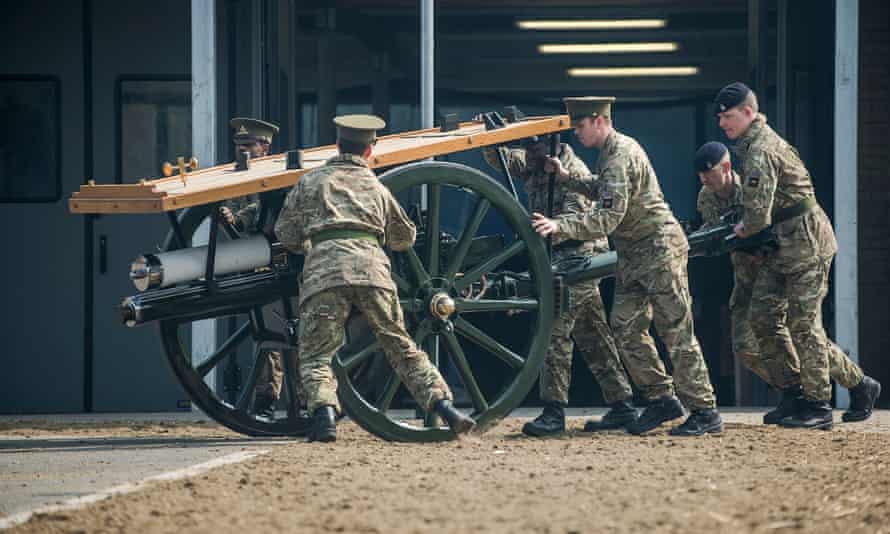Carefully laid plans for the Duke of Edinburgh’s funeral, revised over many years, have been abandoned owing to the coronavirus pandemic, with public elements unable to take place.
The Queen and senior aides have now to fashion a fitting farewell to the longest-serving consort in British history given current restrictions. The plans will be set in motion once they have been personally approved by the Queen.
It will be a major undertaking. Organisers are said to be “desperately anxious” not to stage anything that attracts mass gatherings. The police are facing the difficult, and sensitive, task of ensuring that crowds do not gather to pay their last respects to the duke.
All senior members of the royal family are regularly asked to update their funeral plans. The duke revised his – codenamed Forth Bridge – many times over his long life. “One thing he did not want was for it to be like the funeral of his uncle, Lord Mountbatten [in 1979]. He did not want that ostentation,” a source said. Of that, given all the present circumstances, he is assured.
Under pre-Covid plans for the coming days, thousands of people would have been expected to line the processional route in London as his coffin was borne on a gun carriage pulled by naval ratings through the capital on the day of his funeral.
From London, the coffin was to have travelled to Windsor by Range Rover, with the cortege making its way along a processional route in Windsor to the castle, and St George’s Chapel for the funeral service. The routes were to have been lined with hundreds of members of the armed forces, representatives from the many organisations of which the duke had been patron, and well-wishers.

Traditionally a royal ceremonial funeral would entail a horse-drawn procession. But, in keeping with the duke’s military career and strong links to the armed forces, horses were to be replaced with service personnel. For the duke, who served with the Royal Navy, and was mentioned in dispatches during the second world war, his coffin was to have been be drawn by naval gun carriage – as was Queen Victoria’s – with 80 ratings in front and 40 ratings behind.
Now there is likely to be no procession in London or Windsor.
Up to 800 mourners, including world leaders, Commonwealth representatives, and senior politicians, would have been among those expected to attend the St George’s Chapel funeral. This will now not be possible.
Current rules on funerals in England mean a maximum of 30 people may attend, who must all socially distance unless they live together or share a support bubble. It means the Queen may have to limit the numbers of her large family who can attend. She and others may also have to wear face coverings and stay 2 metres apart.
Tradition suggested that before the funeral his coffin would have initially rested at the Chapel Royal at St James’s Palace in London, where family and household staff could stand private vigil, and private prayers can be said. On the night before his funeral, it was expected that the coffin would have been moved to the nearby Queen’s Chapel. It is not yet known if this is still the case.
Philip’s no-fuss, no-nonsense approach to life was reflected in his refusal to have a lying in state at Westminster Hall, as took place for the Queen Mother’s funeral. According to royal protocol he would have been entitled, as befits his position as a senior member of the royal family and prince consort – though he never used that official title. But he long ago rejected the honour of lying in state, where members of the public pay their respects and visit the coffin, when consulted over his own funeral plans. His decision relieves the government of one potential problem, at least.
Preparations are now expected to centre on Windsor Castle, without the military procession in London or processions through Windsor. The funeral service itself is still likely to be held at St George’s Chapel, and is expected to be televised.
It is likely there will be, as was long planned, a private burial in the royal vault below the chapel, attended by the Queen and senior family members. Some military involvement to honour the duke is still possible, though confined to the grounds of Windsor Castle, and in compliance with Covid-19 restrictions.
Details of the exact final funeral arrangements, with the UK progressing through the easing of restrictions, will be announced in the near future.
A memorial service – not something the duke wanted – could be held at a later date after the nation has dealt with the worst public health crisis for a generation.
In overall charge of the arrangements is the Lord Chamberlain, Baron Parker of Minsmere – a former head of MI5 – who took over the role at the start of April. He is the most senior official of the royal household and has overall responsibility for the duke’s funeral. Sir Edward Young, the Queen’s private secretary and senior adviser, will be on hand for the Queen throughout the challenging days ahead.
This content first appear on the guardian
